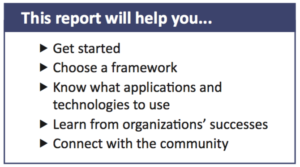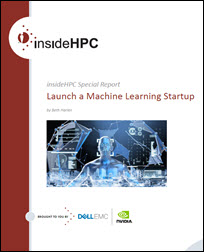This is the first article in a five-part series that covers the steps to take before launching a machine learning startup. The complete report, available here, covers how to get started, choose a framework, decide what applications and technology to use, and more.
While artificial intelligence (AI), machine learning and deep learning are often thought of as being interchangeable, they do in fact relate to very different concepts. It all began in the 1950s with AI and the idea that a computer could be made to simulate human learning and intelligence.
A subclass of that is machine learning, whereby a computer can take large amounts of data and use it begin to recognize patterns, make predictions on new data, and essentially ‘learn’ for itself. The drawback is that machine learning requires that parameters be set for what the computer needs to recognize, and those inputs can be time-consuming. And so we go one step further, into deep learning.
For example, Ripjar offers a service under the heading of ‘Analysis at the Speed of Thought’ that utilizes deep learning combined with natural language processing to analyze an organization’s internal data, in addition to information from sources like news feeds, web pages, and social media posts. These data streams are captured and monitored in real-time, in more than 160 languages, in order to provide cybersecurity, reputation management, compliance, etc. Without the capabilities of deep learning, the inputs required to get results would prove incredibly difficult. In essence, deep learning is enabling the practical application on of machine learning. So how does it work?
Inspired by the structure and activity of neurons within the human brain, deep neural networks (DNN) form the basis of deep learning. Through these algorithms, computers are able to identify features in significantly sized datasets and progress that information on through layers of the neural network, refining as it goes. This leads to a hierarchical representation of the problem.
Developer Considerations for Machine Learning
There are many reasons why startups might struggle to fulfill their potential for financial and technological success. Among the many unique challenges they face from initial concept through to expansion, a lack of scalability can be one of the most difficult to overcome. In this section, we’ll focus on the capabilities and practical application of machine and deep learning, the frameworks and technologies you need to know about, and the ways that the community can help from the very beginning.
If you’re trying to decide whether or not to begin a machine or deep learning project, there are several points that should first be considered:
- Cost
- Need
- Organizational readiness
- Industry readiness
- Competition
- Regulations and compliance
- The pace of innovation
It may sound obvious, but the majority of startups that fail to find traction in the market do so because they’ve identified a need that doesn’t really exist – or at least not enough to be monetized.
Cost can often be the deciding factor. Can your organization afford to embark on this journey, and will your potential customers be able to afford what you’re offering? Be realistic when making these assessments. Once that’s out of the way, the second issue is one of need. It may sound obvious, but the majority of startups that fail to find traction in the market do so because they’ve identified a need that doesn’t really exist—or at least not enough to be monetized.

Readiness is a question you must ask of yourself and the industry. Is your organization ready (and able) to devote time and resources to integrating machine and deep learning into the pipeline, and is the industry ready to adopt your new solution or service? Another thing to consider is the competition. It’s an exciting time for startups, and the potential is huge, but tech heavyweights like Google and Microsoft are also looking to cash in on deep learning. It’s worth keeping that in mind when positioning yourself in the market with a specialty.
For the past five years or so, the pace of innovation within machine and deep learning has quickened significantly. Will your organization be able to keep up?
If they occur, regulation and compliance issues can slow everything down so much that it no longer becomes worth the effort. Finally, is it scalable? For the past five years or so, the pace of innovation within machine and deep learning has quickened significantly. Will your organization be able to keep up?
Where to Begin
If you’re approaching machine or deep learning with no real experience in the design, development and employment of deep neural networks, you’re in good company. Very few organizations—and even fewer startups—come staffed with a full roster of data scientists, ready to build a platform on an enterprise scale.
[clickToTweet tweet=”Readiness is a question you must ask of yourself and the industry. #machinelearning” quote=”Readiness is a question you must ask of yourself and the industry. #machinelearning”]
One of the first points it’s important to recognize is just how accessible machine and deep learning truly are—though that shouldn’t be confused with thinking that these are easy fields to be in. Having the computing power and necessary people skills at your disposal won’t guarantee results. After giving careful consideration to the issues highlighted in the overview, the first step is to focus on the tools and infrastructure while remembering that machine and deep learning successes comes from more than the algorithms.
How to Choose a Framework
Frameworks, applications, libraries and toolkits—journeying through the world of deep learning can be daunting. The ease with which you’ll be able to build and run your application is first determined by the framework you choose. With that in mind, the five best-known frameworks are as follows:
-
-
- Caffe
- Tensorflow
- Torch
- Apache Mahout
- Microsoft Cognitive Toolkit (CNTK)
-
These are five of the frameworks, but you may still be wondering how to choose between them. The answer is that it really depends on what your goals are. If in doubt, it can be helpful to go with one of the more popular or supported frameworks like Caffe or Torch. The full guide covers descriptions and specifics on each of these frameworks to assist you in choosing the perfect framework for your needs.
Deploying the right kit can be critical, and the main thing is the significant advantages that GPU acceleration provides. GPUs and deep learning go together like a marriage made in heaven. The multi-layered nature of the deep neural networks means that they run best on highly parallel processors. Deep learning training and inference will, therefore, be achieved much faster on GPUs—any GPUs—from small workstations to some serious hardware. In fact, you can start developing on any GPU-based system.
The insideHPC Special Report, “Riding the Wave of Machine Learning & Deep Learning,” explains it well: ‘the high compute capability and high memory bandwidth make GPUs an ideal candidate to accelerate deep learning applications, especially when powered with NVIDIA’s Deep Learning so ware development kit (SDK) that includes CUDA® Deep Neural Network library (cuDNN), a GPU-accelerated library of primitives for deep neural networks, TensorRTTM, a high performance neural network inference engine for production deployment of deep learning applications, and CuBLAS a fast GPU-accelerated implementa on of the standard basic linear algebra subroutines.’
The NVIDIA cuBLAS library is a fast GPU-accelerated implementa on of the standard basic linear algebra subrou nes (BLAS). Using cuBLAS APIs, you can speed up your applications by deploying compute-intensive operations to a single GPU or scale up and distribute work across multi-GPU configurations efficiently.
The full guide also offers information on how developers can receive help from community resources, as well as what questions you should be asking while exploring the field of machine learning.
Future articles in the insideHPC guide on launching a machine learning startup will cover the following additional topics:
- A guide to scaling up and out
- Inference Systems
- The results of deep learning technology utilization
- What next? How to enter the world of machine learning
You can download the complete report, “insideHPC Special Report: Launch a Machine Learning Startup,” courtesy of Dell EMC and Nvidia.




